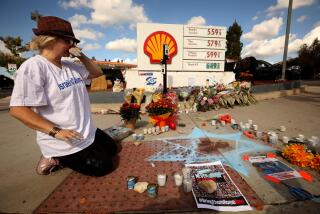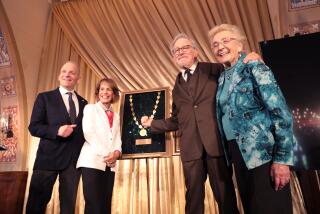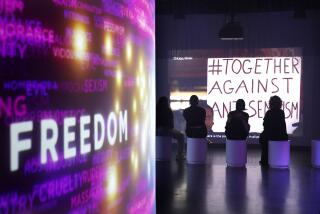Catholics, Jews and the Holocaust
Historical controversies that touch raw nerves are not always best left unexamined. Such is the case with the sensitive question of whether the Roman Catholic Church inadvertently assisted Adolf Hitler in his rise to power. The question has long troubled many Jews--and not a few Catholics. This is why Rabbi A. James Rudin, the national director of interreligious affairs for the American Jewish Committee in New York, was right to say that the recent joint Catholic-Jewish statement about the Nazi Holocaust “is in my opinion unique and is pioneering and groundbreaking.”
The five-page document was released by Jewish and Catholic leaders during the Archdiocese of Los Angeles’ Religious Education Congress last weekend in Anaheim, but its intellectual origin goes back several years to when Pope John Paul II received Austrian President Kurt Waldheim--a decision that infuriated Jewish leaders worldwide and clearly embarrassed some Catholic leaders.
Thereafter, a committee of about 23 Catholic and Jewish leaders in Los Angeles--headed by Rabbi Alfred Wolf and Msgr. Royale M. Vadakin, who represented Archbishop Roger Mahony--went to work to create a joint statement, now titled “The Holocaust: At the Edge of Comprehension,” that attempts to describe the Vatican’s prewar relationship with Hitler. The task was ambitious and difficult, but the final draft could hardly be faulted for not rising to the challenge. Concluded the Catholic-Jewish committee in its analysis of the Vatican’s role: “In the face of growing threats against the Jews, all too few Christian groups raised their voices to protest. Many Christians closed their ears to the Jews in their darkest hour.”
This document is designed to be used as an educational tool in America. It will be sent, for starters, to thousands of Catholic schools, seminaries and parishes--as well as to Jewish leaders and rabbis nationally. All involved in the drafting hope that it will be widely read, discussed and absorbed. It deserves to be understood not only as an honest attempt by both Catholics and Jews to confront an unsatisfactory chapter in the history of the Vatican but as a bold and courageous effort to heal wounds by looking into them deeply and honestly.
More to Read
Sign up for Essential California
The most important California stories and recommendations in your inbox every morning.
You may occasionally receive promotional content from the Los Angeles Times.










